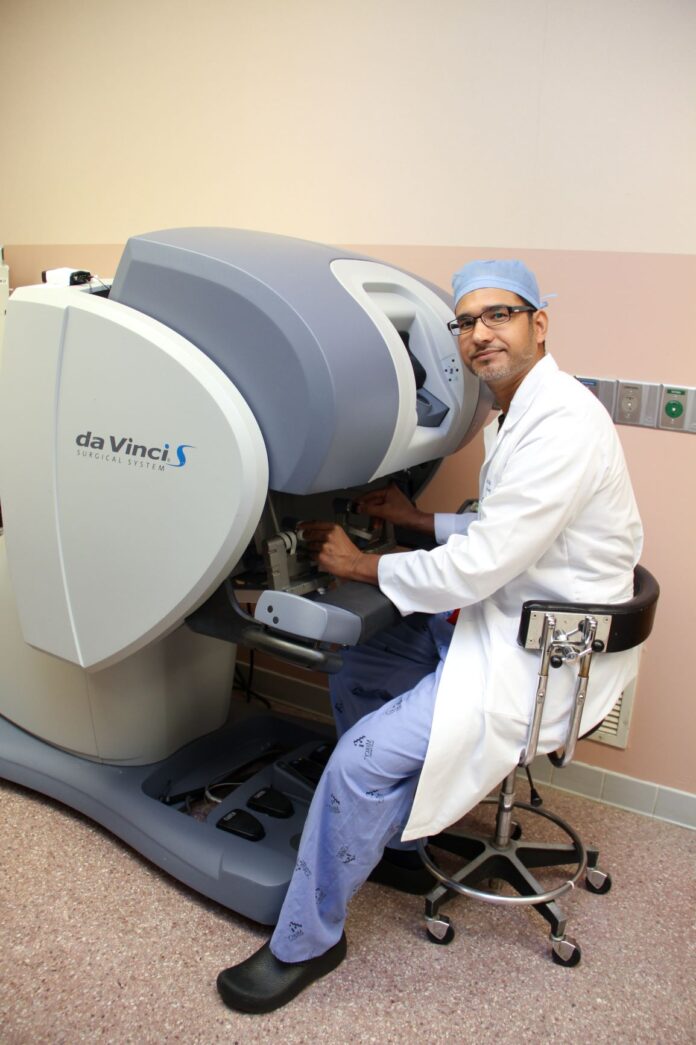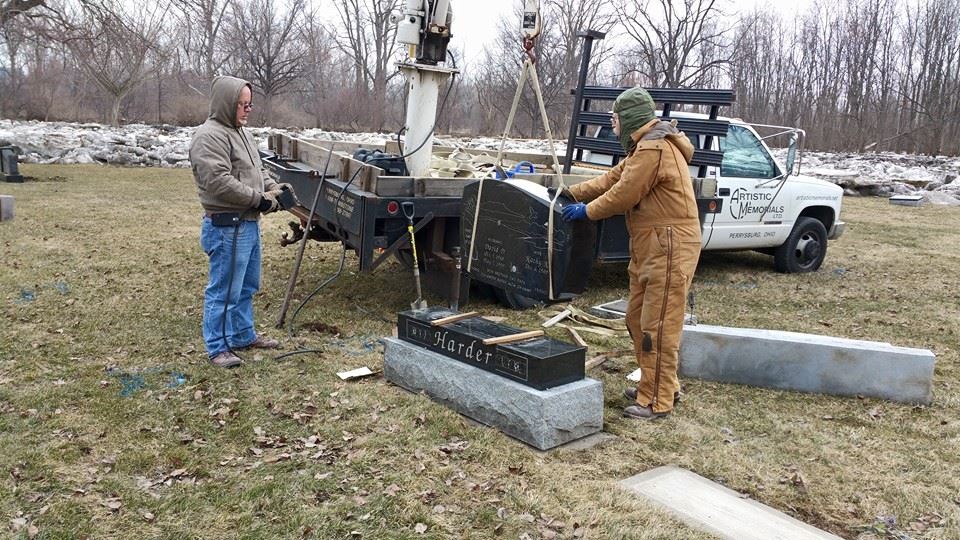
Mercy Health Partners recently opened two new surgical suites with amenities specifically for robotic surgical procedures.
The $2.5 million da Vinci Si will be used at St. Vincent Mercy Medical Center on Cherry Street along with one of Mercy’s older da Vinci models.
In 2002, Mercy was the first hospital in the area to acquire the da Vinci robotic surgical system and is now the only area hospital to use the Si, which Mercy acquired in 2009.
With the da Vinci Si, surgeons maneuver instruments at a console, while instruments at the patient-side cart perform movements in sync with the physician.
Director of Robotics Dr. Mirza Baig, who specializes in urology and pediatric urology, said the cutting-edge da Vinci Si is used for gynecology, urology, cardiovascular and some general surgical procedures.
“We’ve sort of collaborated all the specialties and took an integrated comprehensive approach to robotic surgery here,” Baig said. “When patients come, regardless of the specialty, regardless of the case, it’s a similar type of experience that they end up getting.”
Baig said this is done through a nurse navigator, who walks the patient and family through the entire process and is there before, during and after surgery. He said another is a full-time robotic supervisor who is constantly behind the scenes working with the technology and patient care.
Also, Mercy has implemented new ways for surgeons to track their results and increase their expertise.
Baig said the Si’s camera distinguishes the system in robotic surgery technology.
“What’s unique about the Si is the visual acuity, the camera that it uses,” Baig said. “The optics are unmatched. It’s 3-dimensional, high definition and … it’s the clearest picture you can get.
“It’s also magnified by 10 times, so you can imagine the technology of magnification and precision you can get from these types of surgeries.”
One of the other differences between the da Vinci Si and its elder counterpart is that the da Vinci Si has two consoles, allowing two physicians to collaborate and use the system during surgery.
“We take training and medical education very seriously here,” Baig said. “I sort of equate it to driver’s education, where the teacher has the emergency brake. They’re able to switch controls back and forth.”
Baig said the No. 1 reason Mercy purchased the da Vinci Si was for its single-port technology.
“All of this is minimally invasive, all of this is through small tiny incisions, [and] now you can take it a step further and just do it through one incision,” Baig said. “Through a belly button incision you’ll get surgery without a scar, that’s the idea. That’s specific to this robot. We purchased this technology and we’ve performed the first single sight robotic surgery in town, and we’ve done several now and it’s gone well.”
Mercy is also using Firefly technology as part of the da Vinci Si. Firefly technology allows physicians to inject the patient with a dose of green dye. Normal organ tissue is colored green while tumor tissue isn’t. This allows surgeons to more precisely determine what to remove.
Baig said since the da Vinci’s implementation at Mercy almost 10 years ago, about 1,700 robotic surgeries have been performed.
“We have approximately 21-22 surgeons that are actively doing cases and others that have showed interest in learning robotic surgery, because the benefits are clear to the patients: smaller incisions, less blood loss, quicker recovery time, quicker return to work, all compared to open surgery,” Baig said.
Baig said measuring the success of the da Vinci can be misleading because of the common misconception that the robot is doing the surgery, not the surgeon. Baig is quick to clarify that the Si is a tool and cannot replace the surgeon.
“If the surgeon is capable and well trained, then the robotic surgery, compared to open surgery, is safer,” Baig said. “So the success sort of has different variables that affect it. There are many studies that were performed where the same surgeon has compared his open surgeries to his same robotic surgeries and the benefits and success have been clear.”
ProMedica acquired its first da Vinci in 2008, Director of Surgery and Endoscopy Michelle Ziegler said. ProMedica now has two da Vincis that are used for urology, gynecology and vascular surgeries.
“As we see that robotic surgery is increasing along with the need for it, we have a committee continuing to look at it and the options for the new technology,” Ziegler said.























